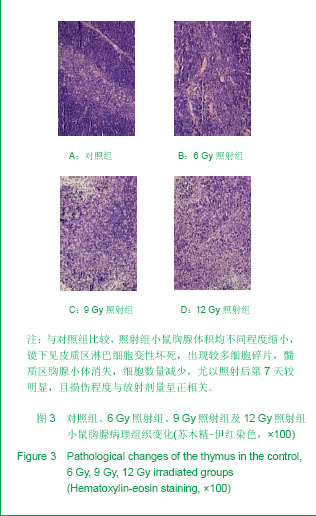| [1] Farese AM, Cohen MV, Stead RB, et al.Pegfilgrastim administered in an abbreviated schedule, significantly improved neutrophil recovery after high-dose radiation-induced myelosuppression in rhesus macaques. Radiat Res. 2012 ;178(5):403-413. http://www.ncbi.nlm.nih.gov/pubmed?term=Pegfilgrastim%20administered%20in%20an%20abbreviated%20schedule%2C%20significantly%20improved%20neutrophil%20recovery%20after%20high-dose%20radiation-induced%20myelosuppression%20in%20rhesus%20macaques
[2] Ahmed EA, Agay D, Schrock G, et al. Persistent DNA damage after high dose in vivo gamma exposure of minipig skin. PLoS One. 2012;7(6):e39521. http://www.ncbi.nlm.nih.gov/pubmed?term=Persistent%20DNA%20damage%20after%20high%20dose%20in%20vivo%20Gamma%20exposure%20of%20Minipig%20skin
[3] Sarukhanov VIa, Isamov NN, Epimakhov VG,et al.Quantitative dependence of sheep death on dose and dose rate of external gamma-radiation. Radiats Biol Radioecol. 2010;50(5):548-551.http://www.ncbi.nlm.nih.gov/pubmed?term=Quantitative%20dependence%20of%20sheep%20death%20on%20dose%20and%20dose%20rate%20of%20external%20gamma-radiation
[4] Nielsen CE, Wilson DA, Brooks AL, et al. Microdistribution and long-term retention of 239Pu (NO 3)4 in the respiratory tracts of an acutely exposed plutonium worker and experimental beagle dogs. Cancer Res. 2012;72(21):5529-5536.http://www.ncbi.nlm.nih.gov/pubmed?term=Microdistribution%20and%20long-term%20retention%20of%20239Pu%20(NO%203)4%20in%20the%20respiratory%20tracts%20of%20an%20acutely%20exposed%20plutonium%20worker%20and%20experimental%20beagle%20dogs
[5] Ardan T, Cejková J. Immunohistochemical expression of matrix metalloproteinases in the rabbit corneal epithelium upon UVA and UVB irradiation.Acta Histochem. 2012;114(6):540-546.http://www.ncbi.nlm.nih.gov/pubmed?term=Immunohistochemical%20expression%20of%20matrix%20metalloproteinases%20in%20the%20rabbit%20corneal%20epithelium%20upon%20UVA%20and%20UVB%20irradiation
[6] Rithidech KN, Tungjai M, Reungpatthanaphong P,et al.Attenuation of oxidative damage and inflammatory responses by apigenin given to mice after irradiation. Mutat Res. 2012;749(1-2):29-38.http://www.ncbi.nlm.nih.gov/pubmed?term=Attenuation%20of%20oxidative%20damage%20and%20inflammatory%20responses%20by%20apigenin%20given%20to%20mice%20after%20irradiation
[7] Shi XY. Xi'an: Shanxi Science and Technology Press, 1989.施新猷. 实验动物科学[M]. 西安: 陕西科学技术出版社,1989.
[8] Li DG, Wang YY, Lu Lu, et al. Xibao yu Fenzi Mianyixue Zazhi. 2011;27(12):1362-1363.李德冠,王月英,路璐等.辐射对小鼠免疫系统损伤远期影响的研究[J].细胞与分子免疫学杂志,2011,27(12):1362-1363.http://www.cnki.net/KCMS/detail/detail.aspx?QueryID=1&CurRec=1&DbCode=CJFQ&dbname=CJFDLAST2012&filename=XBFM201112027&urlid=&yx=
[9]Li FM,Li XY,Qiao GY,et al. Xiandai Zhongxiyi Jiehe Zazhi. 2011;20(23):2876-2881.李凤铭,李雪雁,乔国勇, 等.加味玉屏风散在60Coγ射线致小鼠免疫损伤中的应用研究[J].现代中西医结合杂志,2011,20(23):2876-2881.:http://www.cnki.net/KCMS/detail/detail.aspx?QueryID=7&CurRec=1&DbCode=CJFQ&dbname=CJFDLAST2011&filename=XDJH201123009&urlid=&yx=
[10] Ossetrova NI, Blakely WF.Multiple blood-proteins approach for early-response exposure assessment using an in vivo murine radiation model. Int J Radiat Biol. 2009;85(10):837-850.http://www.ncbi.nlm.nih.gov/pubmed?term=Multiple%20blood-proteins%20approach%20for%20early-response%20exposure%20assessment%20using%20an%20in%20vivo%20murine%20radiation%20model
[11]Ossetrova NI, Sandgren DJ, Gallego S, et al.Combined approach of hematological biomarkers and plasma protein SAA for improvement of radiation dose assessment triage in biodosimetry applications. Health Phys. 2010;98(2):204-208.http://www.ncbi.nlm.nih.gov/pubmed?term=Combined%20approach%20of%20hematological%20biomarkers%20and%20plasma%20protein%20SAA%20for%20improvement%20of%20radiation%20dose%20assessment%20triage%20in%20biodosimetry%20applications
[12] Li YP, Li YJ, Han CH, et al. Weisheng Yanjiu. 2006;35(1):100-102.李业鹏,李燕俊,韩春卉,等. 小鼠放射性免疫低下模型的研究[J]. 卫生研究,2006,35(1):100-102.http://www.cnki.net/KCMS/detail/detail.aspx?QueryID=14&CurRec=1&DbCode=CJFQ&dbname=CJFD0608&filename=WSYJ200601035&urlid=&yx=
[13] Yang MH,Zhang LJ,Feng LC, et al. Junyi Jinxiu Xueyuan Xuebao. 2006;27(6):415.杨明会,张利军,冯林春,等.小剂量多次照射大鼠放射性肺损伤模型的评价[J].军医进修学院学报,2006,27(6):415.http://www.cnki.net/KCMS/detail/detail.aspx?QueryID=19&CurRec=1&DbCode=CJFQ&dbname=CJFD0608&filename=JYJX200606009&urlid=&yx=
[14] Jiang L, Li ZH, Lou L,et al. Zhongguo Zuzhi Gongcheng Yanjiu yu Linchuang Kangfu. 2009;13(45):8906-8910.蒋玲,李真慧,楼琳,等.骨髓间充质干细胞移植治疗大鼠肾脏辐射损伤[J]. 中国组织工程研究与临床康复,2009,13(45):8906-8910.http://www.cnki.net/KCMS/detail/detail.aspx?QueryID=25&CurRec=1&DbCode=CJFQ&dbname=CJFD0911&filename=XDKF200945023&urlid=&yx=
[15] Jiang YY,Bai X,Zhang Z,et al.Haerbin Yike Daxue Xuebao. 2011;45(2):120-123.姜亦瑶,白雪,张璋等.慢性放射性肺损伤模型建立的初步研究[J]. 哈尔滨医科大学学报,2011,45(2):120-123. http://www.cnki.net/KCMS/detail/detail.aspx?QueryID=31&CurRec=1&DbCode=CJFQ&dbname=CJFDLAST2011&filename=HYDX201102007&urlid=&yx=
[16]Cui YF, Ding YQ, Xu H,et al. Xibao yu Fenzi Mianyixue Zazhi. 2004;20(6):675-677.崔玉芳,丁彦青,徐菡,等.大剂量γ射线对小鼠免疫功能近期、远期的影响[J]. 细胞与分子免疫学杂志,2004,20(6):675-677.http://www.cnki.net/KCMS/detail/detail.aspx?QueryID=74&CurRec=5&DbCode=CJFQ&dbname=CJFD0305&filename=XBFM200406008&urlid=&yx=
[17]Wu DC. Beijing: Military Medical Science Press, 2001.吴德昌. 放射医学[M]. 北京: 军事医学科出版社,2001.
[18] Zhao H, Wang Z, Ma F,et al.Protective Effect of Anthocyanin from Lonicera Caerulea var. Edulis on Radiation-Induced Damage in Mice. Int J Mol Sci. 2012;13(9):11773-11782. http://www.ncbi.nlm.nih.gov/pubmed?term=Protective%20effect%20of%20anthocyanin%20from%20Lonicera%20caerulea%20var.%20edulis%20on%20radiation-induced%20damage%20in%20mice
[19] Hu Y, Cao JJ, Liu P,et al.Protective role of tea polyphenols in combination against radiation-induced haematopoietic and biochemical alterations in mice. Phytother Res. 2011;25(12):1761-1769.http://www.ncbi.nlm.nih.gov/pubmed?term=Protective%20role%20of%20tea%20polyphenols%20in%20combination%20against%20radiation-induced%20haematopoietic%20and%20biochemical%20alterations%20in%20mice
[20] Jayakumar S, Bhilwade HN, Dange PS,et al.Magnitude of radiation-induced DNA damage in peripheral blood leukocytes and its correlation with aggressiveness of thymic lymphoma in Swiss mice. Int J Radiat Biol. 2011;87(11):1113-1139.http://www.ncbi.nlm.nih.gov/pubmed?term=Magnitude%20of%20radiation-induced%20DNA%20damage%20in%20peripheral%20blood%20leukocytes%20and%20its%20correlation%20with%20aggressiveness%20of%20thymic%20lymphoma%20in%20Swiss%20mice
[21]Cui YF,Gao YB,Yang H,et al. Zhongguo Tishixue yu Tuxiang Fenxi. 1998;3(4):208-214.崔玉芳,高亚兵,杨红,等.小鼠胸腺淋巴细胞辐射损伤特点和机理的研究[J].中国体视学与图像分析1998,3(4):208-214.http://www.cnki.net/KCMS/detail/detail.aspx?QueryID=75&CurRec=1&DbCode=CJFQ&dbname=CJFD9498&filename=ZTSX804.004&urlid=&yx=
[22] Hao J,Luo QL,Xiong GL,et al. Zhonghua Fangshe Yixue yu Fnaghu Zazhi. 2001;21(1):31-34.郝静,罗庆良,熊国林,等.rhIL-11不同时间给药对急性放射病猕猴造血系统的影响[J].中华放射医学与防护杂志,2001,21(1):31-34.http://www.cnki.net/KCMS/detail/detail.aspx?QueryID=77&CurRec=1&DbCode=CJFQ&dbname=CJFD9902&filename=ZHFS200101014&urlid=&yx=
[23]Penit C, Ezine S.Cell proliferation and thymocyte subset reconstitution in sublethally irradiated mice: compared kinetics of endogenous and intrathymically transferred progenitors. Proc Natl Acad Sci U S A. 1989;86(14):5547-5551.http://www.ncbi.nlm.nih.gov/pubmed?term=Cell%20proliferation%20and%20thymocyte%20subset%20reconstitution%20in%20sublethally%20irradiated%20mice%3A%20compared%20kinetics%20of%20endogenous%20and%20intrathymically%20transferred%20progenitors
[24]Tang RX, Ding S, Xu KL, et al. Injury of bone marrow endothelial niche by irradiation myeloablative conditioning in mouse allo-BMT. Zhongguo Shi Yan Xue Ye Xue Za Zhi. 2010;18(6):1579-1584.http://www.ncbi.nlm.nih.gov/pubmed?term=Injury%20of%20bone%20marrow%20endothelial%20niche%20by%20irradiation%20myeloablative%20conditioning%20in%20mouse%20allo-BMT. |







.jpg)